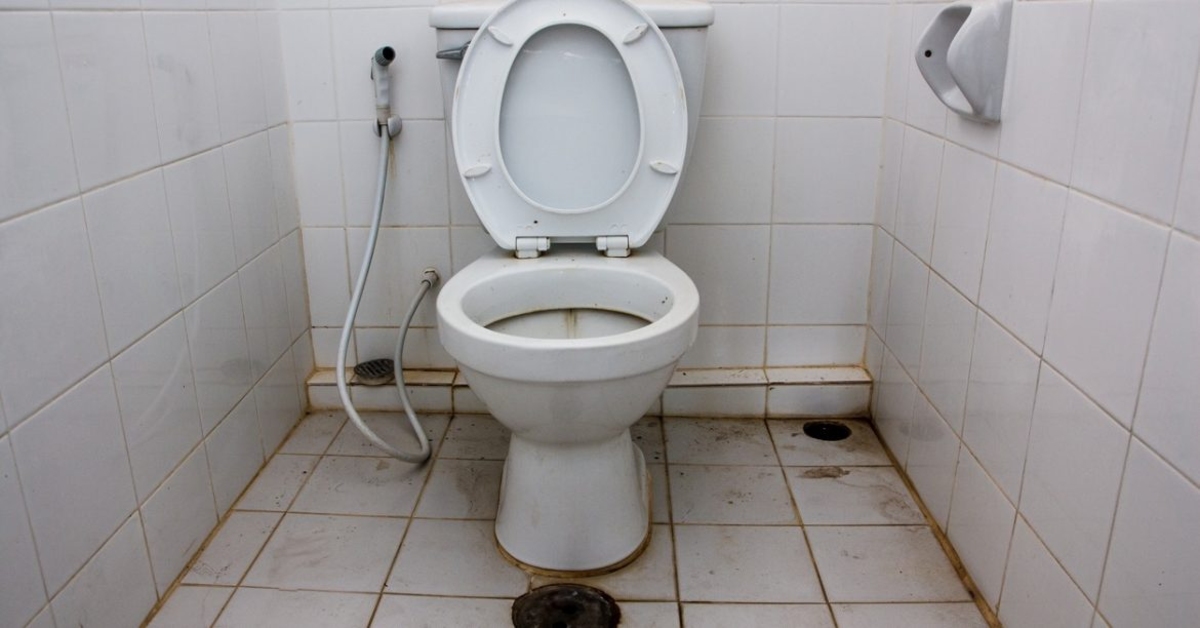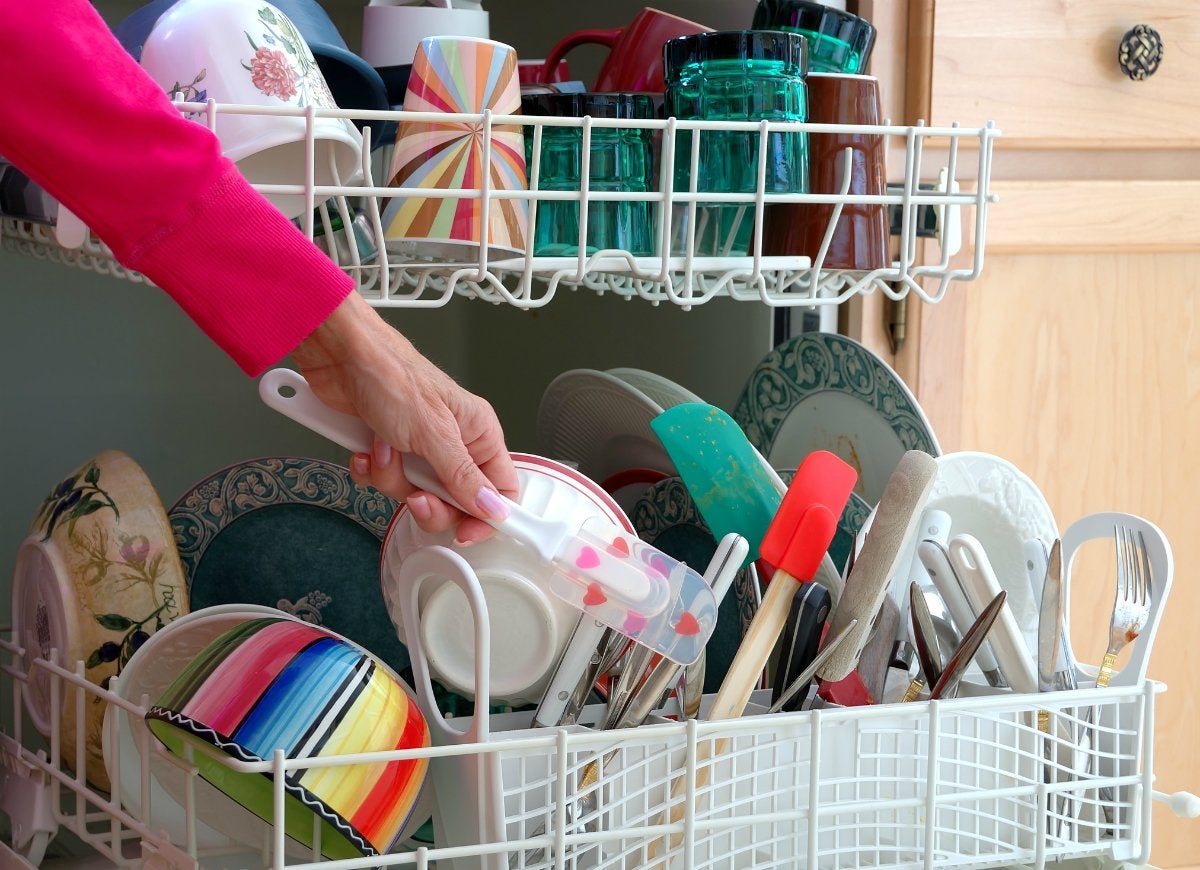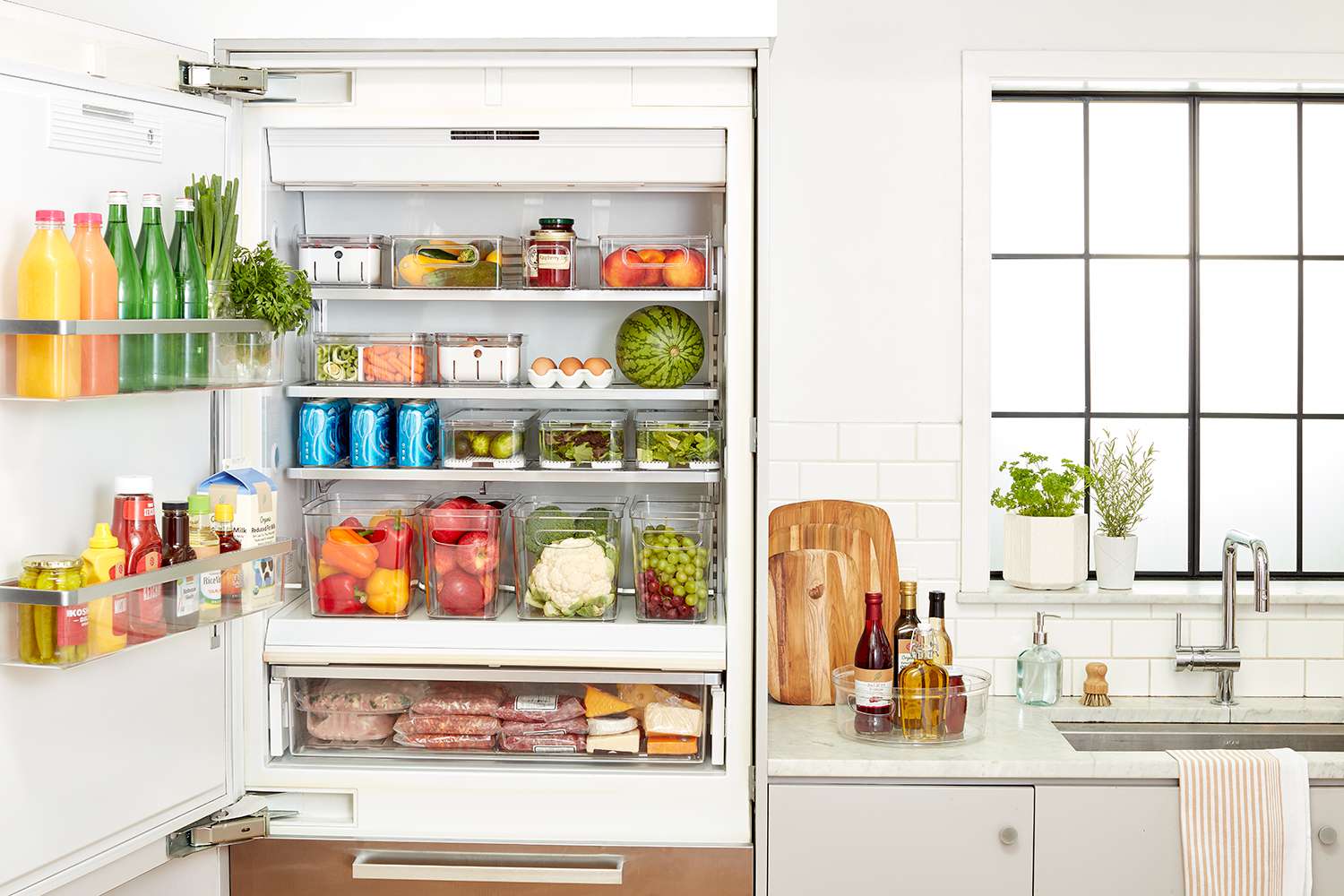Home>Storage Ideas>Bathroom Storage>5 Unhygienic Bathroom Mistakes To Avoid And Why


Bathroom Storage
5 Unhygienic Bathroom Mistakes To Avoid And Why
Modified: January 21, 2024
Avoid these 5 unhygienic bathroom mistakes for better cleanliness and organization. Discover the importance of proper bathroom storage.
(Many of the links in this article redirect to a specific reviewed product. Your purchase of these products through affiliate links helps to generate commission for Storables.com, at no extra cost. Learn more)
Introduction
Welcome to the wonderful world of bathroom storage! If you’re someone who values organization and cleanliness, then you’re in the right place. In this article, we will delve into the realm of bathroom storage and explore the many tips and tricks for optimizing space and keeping your bathroom clutter-free.
The bathroom is often one of the smallest rooms in a home, but it can quickly become a breeding ground for disarray if not properly managed. From towels and toiletries to cleaning supplies and medications, there are numerous items that need to be stored and organized in a limited space. It can be a challenge, but with the right knowledge and approach, you can transform your bathroom into a tranquil oasis of order.
Our goal here is to not only help you find practical solutions for bathroom storage, but also to provide valuable insight on how to optimize your storage space while maintaining proper hygiene. We’ll explore common mistakes that people make when it comes to bathroom storage, and why it’s important to avoid them. So, let’s get started on this journey to a more organized and hygienic bathroom!
Key Takeaways:
- Proper hand washing, regular surface cleaning, and towel hygiene are crucial for maintaining a hygienic bathroom and preventing the spread of germs and infections.
- Closing the toilet lid before flushing and proper disposal of personal hygiene products are essential for minimizing the spread of bacteria and maintaining a clean and functional bathroom.
Mistake 1: Not Washing Hands Properly
One of the most basic yet crucial bathroom hygiene mistakes people make is not washing their hands properly. Many individuals underestimate the importance of hand hygiene and the role it plays in preventing the spread of germs and bacteria.
When using the bathroom, it is essential to wash your hands with soap and warm water for at least 20 seconds. This ensures that any bacteria or germs picked up from surfaces or while using the toilet are effectively removed. Neglecting to wash your hands thoroughly can lead to the spread of harmful pathogens and increase the risk of infections, such as gastrointestinal illnesses.
To wash your hands properly, follow these steps:
- Wet your hands with clean, running water.
- Apply enough soap to cover all surfaces of your hands.
- Rub your hands together, ensuring you lather the backs of your hands, between your fingers, and under your nails.
- Scrub your hands for at least 20 seconds. To make it fun, you can sing the “Happy Birthday” song twice in your head!
- Rinse your hands thoroughly under clean, running water.
- Dry your hands with a clean towel or use an air dryer.
- If possible, use the towel to turn off the faucet to avoid recontaminating your hands.
In addition to proper hand washing, it’s also important to remember to wash your hands after using the toilet, before and after handling food, after sneezing or coughing, and after touching surfaces that may be contaminated.
By practicing good hand hygiene, you can prevent the spread of germs and keep yourself and those around you healthy.
Mistake 2: Neglecting to Clean Surfaces Regularly
A clean and hygienic bathroom starts with regular cleaning of surfaces. However, one common mistake people make is neglecting to clean bathroom surfaces on a regular basis. Over time, dirt, grime, and bacteria can build up on various surfaces, leading to an unhygienic environment.
To maintain a clean bathroom, it’s important to prioritize regular cleaning routines. Here are some key surfaces that should be cleaned regularly:
- Toilet: The toilet is one of the most used fixtures in the bathroom and can harbor harmful bacteria. Use a toilet brush and a disinfecting cleaner to scrub the inside of the bowl and the exterior surfaces regularly.
- Sink and Countertop: Wipe down the sink and countertop daily with a mild cleaner or disinfectant to remove toothpaste, soap residue, and other dirt.
- Shower and Bathtub: Clean the shower and bathtub at least once a week to remove soap scum, mold, and mildew. Use a bathroom cleaner or a mixture of vinegar and water to scrub the surfaces thoroughly.
- Mirror: Wipe down the mirror with a glass cleaner or a mixture of water and vinegar to remove fingerprints and smudges.
- Floor: Sweep or vacuum the bathroom floor regularly to remove dust, hair, and debris. Mop the floor with a suitable cleaner to remove dirt and stains.
It’s important to remember that different surfaces may require different cleaning methods. Always read and follow the instructions on cleaning products to ensure safe and effective cleaning.
In addition to regular surface cleaning, it’s a good idea to replace bathroom rugs, towels, and shower curtains regularly. These items can harbor moisture, mold, and bacteria, so it’s important to wash or replace them as needed.
By maintaining a regular cleaning routine and paying attention to all bathroom surfaces, you can create a clean and hygienic environment for yourself and your family.
Mistake 3: Using Dirty or Shared Towels
Towels play a crucial role in bathroom hygiene, but using dirty or shared towels is a common mistake that can have negative consequences on your health. Towels can quickly become breeding grounds for bacteria and other germs if not properly cared for and replaced regularly.
Here are some key reasons why using dirty or shared towels is a mistake you should avoid:
- Increased risk of infections: Dirty towels can harbor bacteria, fungi, and even viruses. When you use a towel that is contaminated with these microorganisms, you increase the risk of developing skin infections, respiratory infections, and other illnesses.
- Transfer of body fluids and germs: Towels can easily become contaminated with body fluids such as sweat, saliva, and dead skin cells. When you share towels with others, you run the risk of cross-contamination, as the germs and bacteria from one person can be transferred to another through the shared towel.
- Proliferation of mold and mildew: Towels that are not properly dried between uses can become a breeding ground for mold and mildew. These fungi not only produce an unpleasant odor, but they can also trigger allergies and respiratory problems when inhaled.
To avoid these issues, it’s important to establish good towel hygiene practices:
- Wash your towels regularly: Ideally, towels should be washed after every 3-4 uses. Use hot water and a suitable detergent to ensure proper cleaning and removal of bacteria and germs.
- Avoid sharing towels: Each member of your household should have their own towel to prevent cross-contamination. This includes hand towels, bath towels, and face towels.
- Properly dry towels: After each use, hang towels in a well-ventilated area or use a towel rack that allows for proper air circulation. Avoid folding or bunching up towels when they are still damp, as this can promote the growth of mold and mildew.
- Replace old or worn-out towels: Over time, towels can become worn, lose their absorbency, and harbor more bacteria. It’s important to regularly assess the condition of your towels and replace them as needed.
By following these guidelines, you can ensure that your towels are clean, hygienic, and free from harmful bacteria and germs. This will contribute to a healthier and more enjoyable bathroom experience for you and your family.
Always close the toilet lid before flushing to prevent the spread of bacteria and germs into the air and onto surfaces in the bathroom.
Mistake 4: Flushing with the Lid Open
One bathroom mistake that many people tend to overlook is flushing the toilet with the lid open. While it may seem like an innocent act, flushing with the lid open can have some serious consequences in terms of hygiene and the spread of germs.
Here are a few reasons why flushing with the lid open is a mistake you should avoid:
- Aerosolized germs: When you flush the toilet, a phenomenon known as “toilet plume” occurs. This refers to the release of tiny water droplets, along with bacteria and other microorganisms, into the air. If the lid is open, these germs can spread to nearby surfaces, including toothbrushes, towels, and even the air you breathe.
- Contamination of bathroom surfaces: Flushing with the lid open can lead to the contamination of bathroom surfaces, such as countertops, shelves, and fixtures. This can increase the risk of cross-contamination and the spread of germs throughout the bathroom.
- Hygiene in public spaces: When using public restrooms, it’s especially important to close the toilet lid before flushing. Public restrooms often have a higher concentration of bacteria, and by flushing with the lid open, you contribute to the spread of germs that can potentially harm others.
It’s crucial to make it a habit to close the toilet lid before flushing, whether you’re at home or in a public restroom. By doing so, you can minimize the spread of germs and maintain a cleaner and more hygienic bathroom environment.
In addition to closing the lid, here are a few other tips to enhance bathroom hygiene:
- Wash your hands: Always remember to wash your hands thoroughly after using the toilet to remove any potential germs.
- Clean your toilet regularly: Regularly clean your toilet bowl, seat, and lid to remove any residue and keep them germ-free.
- Use disinfectant wipes: Keep a pack of disinfectant wipes handy to quickly wipe down bathroom surfaces, including the toilet lid, if needed.
By being mindful of closing the toilet lid and practicing good hygiene, you can contribute to a healthier and more sanitary bathroom environment for yourself and others.
Mistake 5: Not Properly Disposing of Personal Hygiene Products
Proper disposal of personal hygiene products is an essential aspect of bathroom hygiene that is often overlooked. Improper disposal can lead to hygiene issues, plumbing problems, and even environmental damage. To ensure a clean and efficient bathroom, it is crucial to properly dispose of personal hygiene products such as sanitary pads, tampons, and wet wipes.
Here are some key reasons why not properly disposing of personal hygiene products is a mistake you should avoid:
- Clogged plumbing: Flushing personal hygiene products down the toilet can lead to clogging of the plumbing system. These items are not designed to disintegrate in water like toilet paper, so they can get stuck in the pipes, causing blockages and backups.
- Environmental damage: Flushing personal hygiene products can have a significant impact on the environment. For example, plastic applicators from tampons can end up in oceans and water bodies, creating marine pollution. Additionally, the materials used in these products take a long time to decompose, contributing to landfill waste.
- Spread of bacteria and infections: When personal hygiene products are not disposed of properly, they can become a breeding ground for bacteria and odors. This can lead to unpleasant smells in the bathroom and potentially increase the risk of infections.
To avoid these issues, it is crucial to follow proper disposal practices:
- Use designated disposal bins: Place designated disposal bins in your bathroom for the disposal of personal hygiene products. These bins should have a sealed lid to prevent odors and bacteria from spreading.
- Wrap products before disposing: To prevent the spread of bacteria and odors, wrap personal hygiene products in toilet paper or sanitary disposal bags before placing them in the disposal bin.
- Avoid flushing personal hygiene products: Never flush personal hygiene products, including tampons, sanitary pads, and wet wipes. These items should always be placed in the designated disposal bin.
- Inform guests and family members: Educate your family members and guests about proper disposal practices in your bathroom to ensure everyone follows the correct procedures.
By following these guidelines, you can promote proper hygiene, prevent plumbing issues, and contribute to a healthier environment. Remember, responsible and mindful disposal of personal hygiene products is essential for maintaining a clean and functional bathroom.
Conclusion
Creating a hygienic and organized bathroom is crucial for maintaining a clean and healthy environment in your home. By avoiding common bathroom storage mistakes and implementing proper hygiene practices, you can transform your bathroom into a sanctuary of cleanliness and functionality.
We’ve explored some of the most prevalent mistakes people make in bathroom storage and hygiene, including not washing hands properly, neglecting to clean surfaces regularly, using dirty or shared towels, flushing with the lid open, and not properly disposing of personal hygiene products. By addressing these mistakes, you can significantly improve the hygiene and cleanliness of your bathroom.
Remember to wash your hands thoroughly, using soap and warm water, after using the bathroom or handling any potentially contaminated surfaces. Regularly clean bathroom surfaces to remove dirt, grime, and harmful bacteria. Avoid using dirty or shared towels, as they can harbor germs and lead to infections. Always close the toilet lid before flushing to minimize the spread of bacteria and germs. And lastly, properly dispose of personal hygiene products to prevent plumbing issues and environmental damage.
By adopting these practices and incorporating them into your bathroom routine, you can create a space that promotes good hygiene, reduces the risk of infections, and maintains a clean and organized environment.
So, take these tips to heart and embark on your bathroom storage journey. Your bathroom will not only become a more functional space but also a place where you can relax and rejuvenate, knowing that you’ve created a hygienic and inviting oasis.
Frequently Asked Questions about 5 Unhygienic Bathroom Mistakes To Avoid And Why
Was this page helpful?
At Storables.com, we guarantee accurate and reliable information. Our content, validated by Expert Board Contributors, is crafted following stringent Editorial Policies. We're committed to providing you with well-researched, expert-backed insights for all your informational needs.















0 thoughts on “5 Unhygienic Bathroom Mistakes To Avoid And Why”